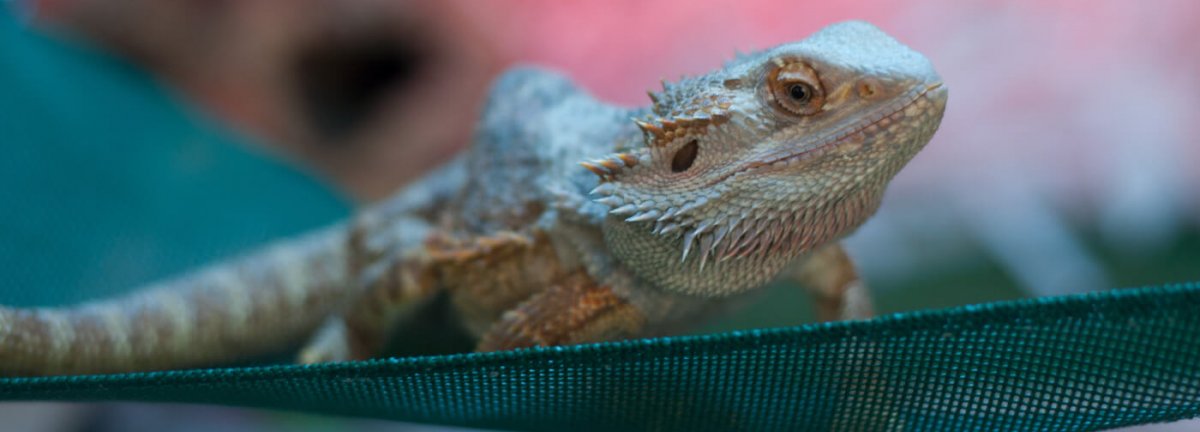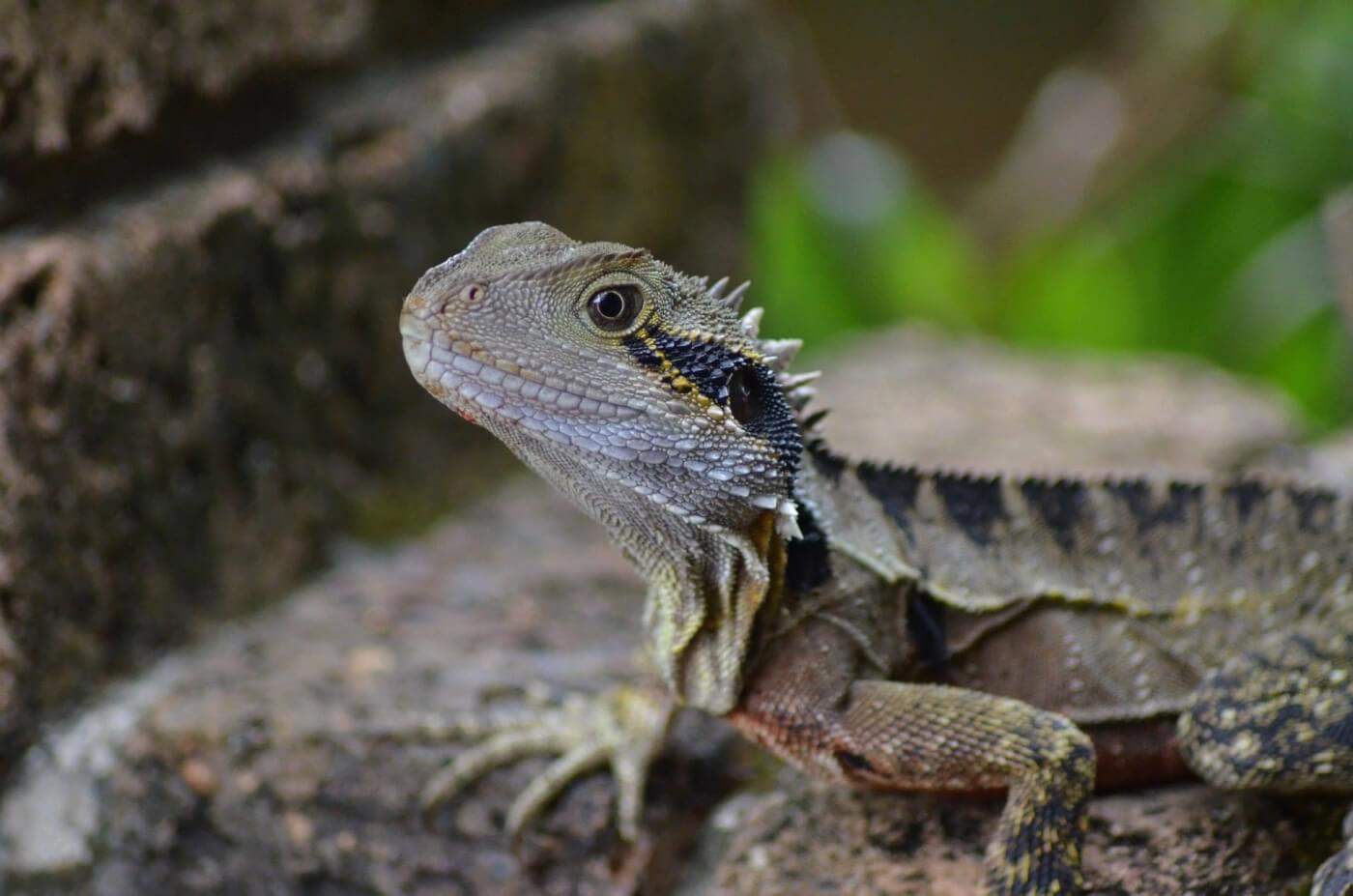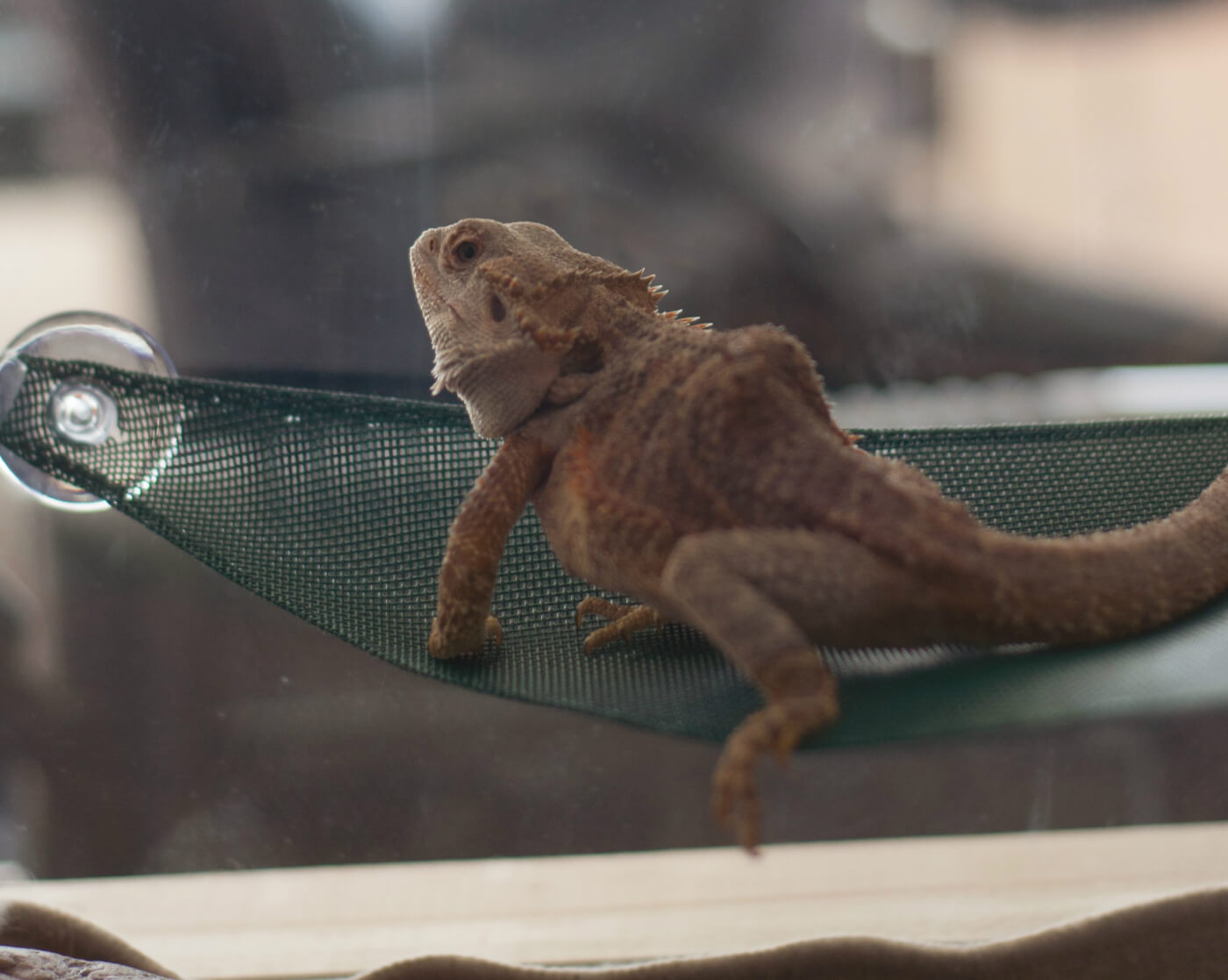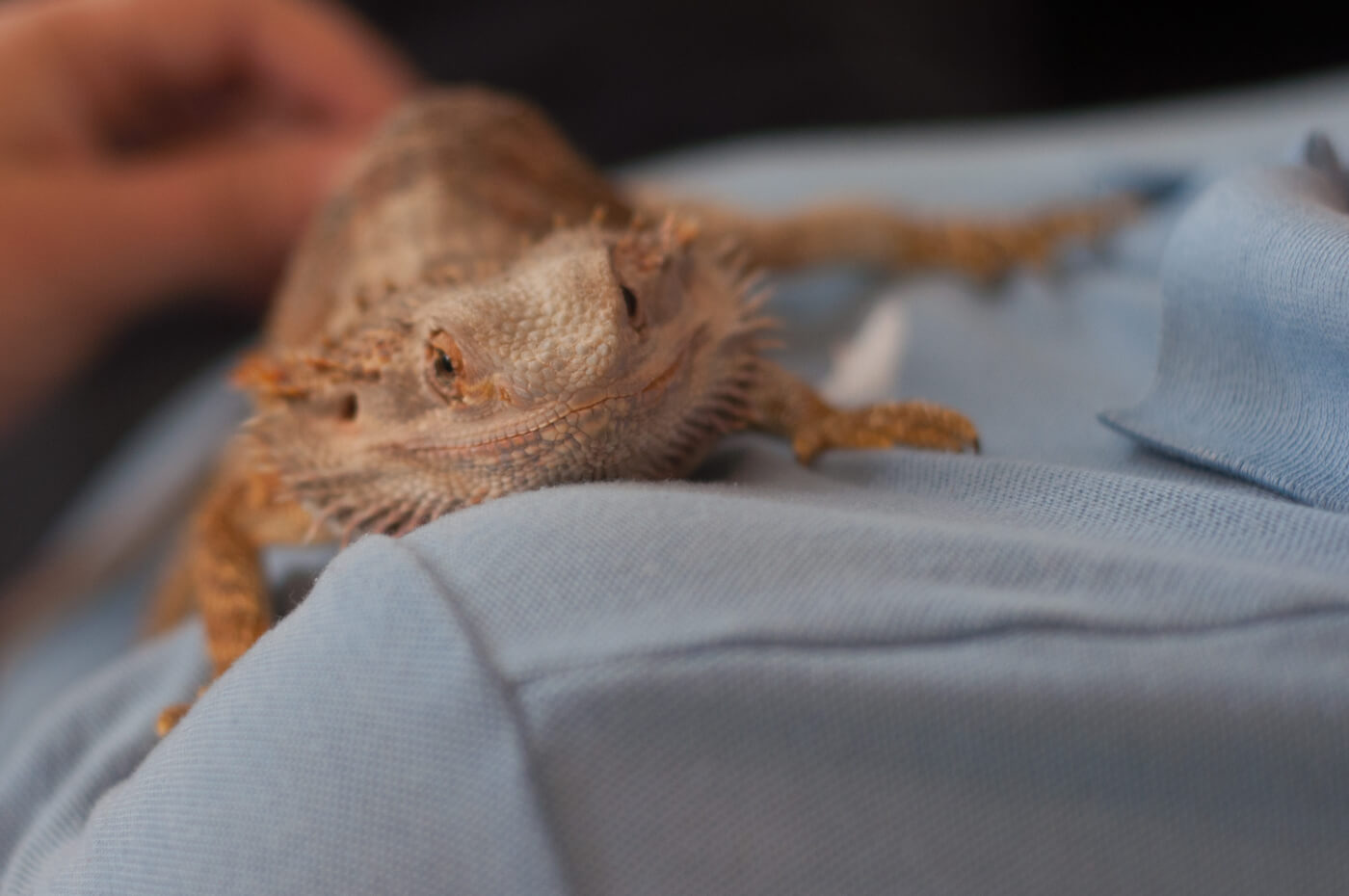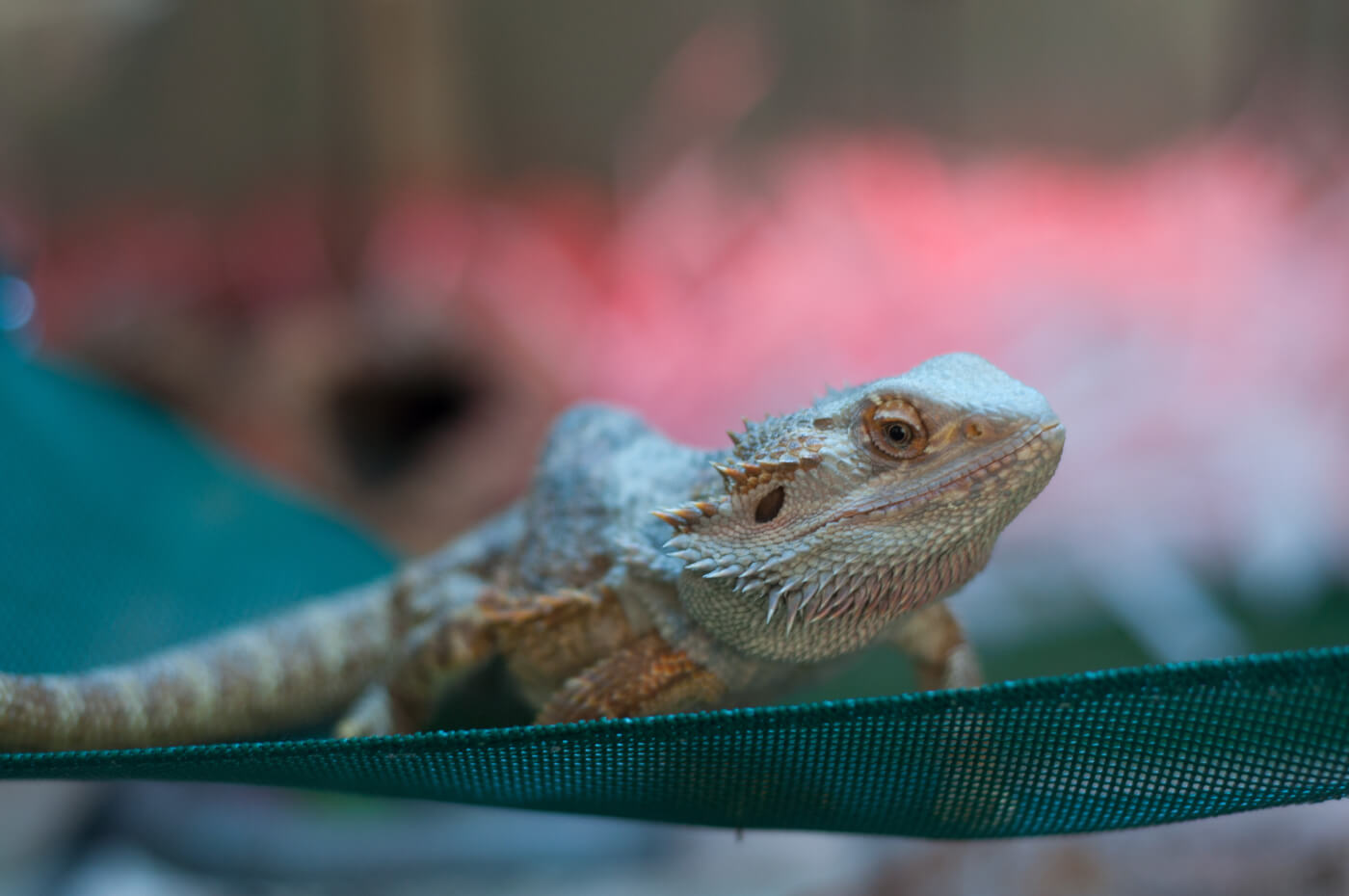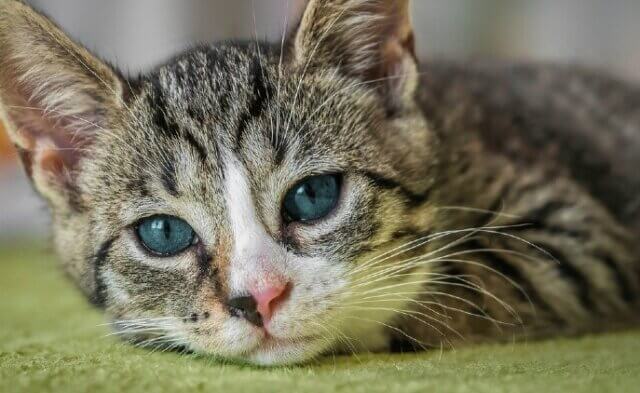This excerpt is originally featured in PETA’s new book, Love and Rescue: Tales of Survival, available for purchase in the PETA Catalog.
Even in a warehouse filled with thousands of animals, Esmeralda stood out.
There she was, surrounded by other reptiles in varying states of neglect, illness, and misery at Reptiles by Mack—a massive reptile breeder and dealer in Xenia, Ohio, that supplied animals to PetSmart and other pet stores. This big, beautiful, sunset-hued bearded dragon suffered from a spinal deformity that gave her a hunchbacked appearance. Warehouse staffers mockingly called her Quasimodo, after the hunchback of Notre Dame. PETA’s investigator dubbed her Esmeralda.
Bearded dragons don’t belong in animal warehouses. They are native to the deserts and arid woodlands of Australia. Their earth-colored skin helps them blend into their surroundings, and their strong, nimble claws enable them to climb over rocks and up trees and to burrow into the ground to lay eggs or escape from the summer heat. They—like any other animal—simply can’t thrive in a cage. Nevertheless, they’re one of the most popular reptiles sold in pet stores.
Many wild animals are taken from their native habitats, shoved into containers alongside dozens of other frightened and bewildered individuals, and shipped halfway around the world to be sold to big-box stores, large pet-store chains, and other animal dealers. Others are born in massive breeding mills—like Reptiles by Mack—warehoused in filthy and crowded conditions, and treated as breeding machines until they can no longer reproduce, at which point they’re usually killed, often by being gassed inside a plastic bag. One sick, emaciated female bearded dragon in Esmeralda’s warehouse was being allowed to live only until she finished laying her eggs, after which she would be killed.
Young females died after being put into tubs with large males in an effort to breed them, a practice that a warehouse supervisor described as “throwing little kids in there to get raped.”
Esmeralda’s deformity—likely the result of a metabolic bone disease, perhaps caused by inbreeding or a lack of proper food or lighting when she was a baby—meant that she could be neither bred nor sold, so she was kept at Reptiles by Mack as a freak novelty, like a shrunken head or a dinosaur fossil. Her whole world consisted of a small, barren plastic tub. With nothing to do, she lay motionless in the corner all day long, staring at the sides of the container—perhaps dreaming that she was far away in Australia.
Knowing that she was considered worthless by Reptiles by Mack, the PETA observer—who was carefully documenting inhumane conditions there—asked to take her home, and the manager agreed, saying that she had “just been staying here eating our food” for long enough. That was Esmeralda’s lucky day.
After veterinarians determined that her deformity, although permanent, wasn’t painful, she was taken to the Sam Simon Center. There, she was finally able to do the things that she longed to do, such as burrowing in nesting materials, enjoying fresh veggies, climbing and basking on logs, lounging in a tiny lizard-size hammock, relaxing blissfully in a pool of water, and looking at something other than the walls of a plastic tub.
Esmeralda came alive! She was fascinated by all the new sights and sounds and avidly watched everything going on around her, soaking up every experience after her prior life of sensory deprivation. Every morning, she loved to clamber up onto the shoulder of a PETA fieldworker and perch there like a bird while this kind human being checked her e-mail.
After recovering at PETA’s shelter for more than four months, Esmeralda caught the attention of a woman who had recently lost her rescued “beardie,” whom she had lived with for over four years. Her heart broke when she learned about the suffering and neglect that Esmeralda had endured at Reptiles by Mack, and she decided to give the reptile a permanent home with all the things that she needed and deserved.
Esmeralda was adopted, and her savior sent PETA a generous donation to cover the cost of her medical treatment and care, a gesture that was greatly appreciated. But her most compassionate act of all was to look past the little hunchback’s outward appearance and recognize her inner beauty, which had gone unnoticed for so long.
Become a member of PETA’s Investigations and Rescue Fund, and help animals strengthening one of the most vital parts of PETA—our eyewitness investigations and life-changing animal rescue work.

